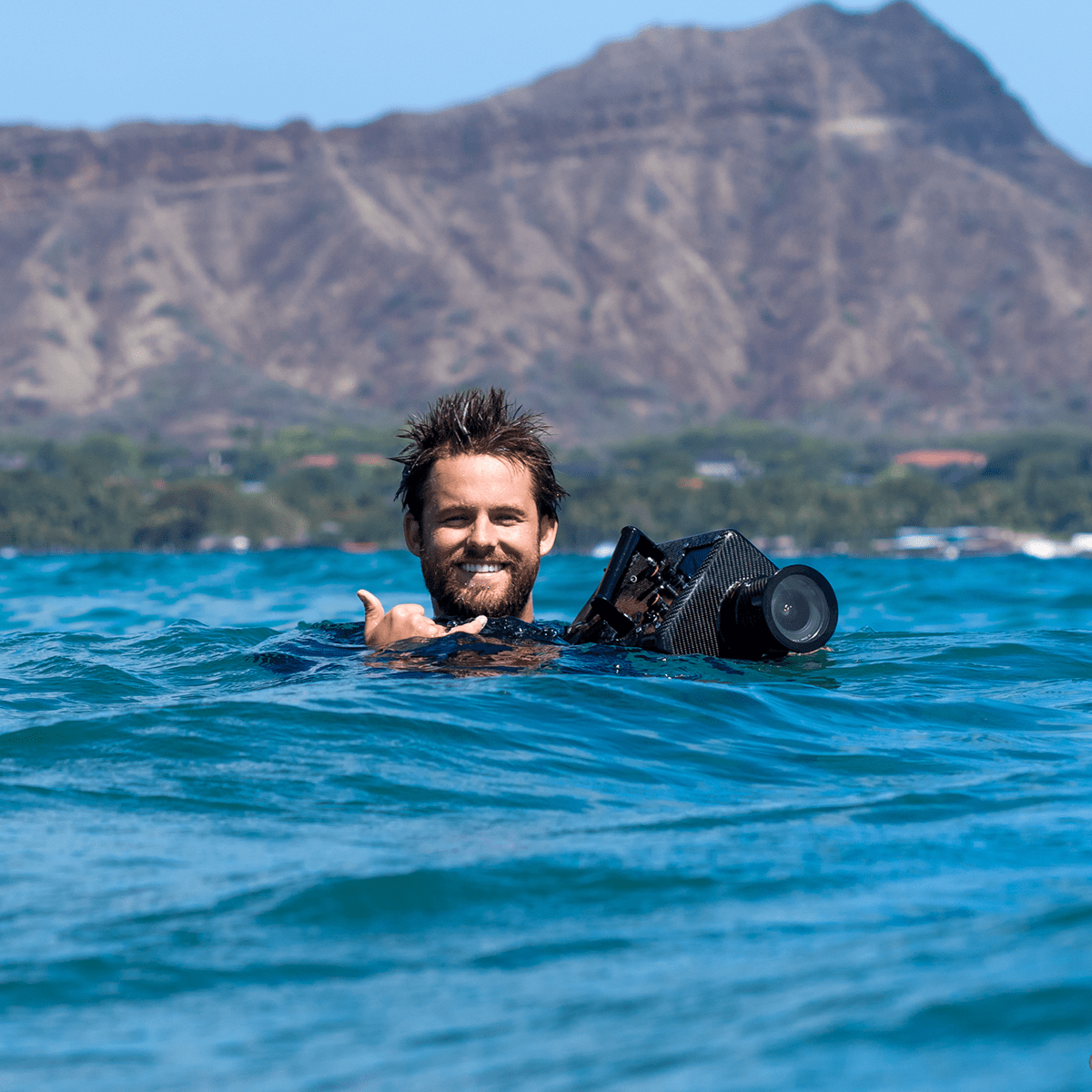Flow State: Behind the Action of Surf Filmmaker Aaron Lieber
From a young age, Aaron Lieber knew how to take advantage of his strengths. He was innately drawn to the outdoors, sports and film, and used this passion to fuel his early work filming friends skate, surf and snowboard. During his adolescent school years, students were presented with the option of submitting work as a written paper or video—the decision was obvious and it offered Lieber yet another opportunity to develop his skills as a filmmaker. He racked up quite a portfolio of work while simultaneously teaching himself Final Cut Pro®, shooting techniques, script writing, directing, and how to tell a story while making a mix of action films and school film narratives. These fledgling steps eventually led him to an internship with TransWorld Surf Magazine’s online editor just as broadband began to bring Internet-based media consumption to the mainstream. Inspired from his internship and only 20 years old, Aaron resolved to make a surf movie. He created a proposal and set off down the obligatory road of rejections until, at last, one group said yes. Armed with a small budget, he embarked on the unknown journey to make an hour-long surf film. Lieber traveled the world filming while juggling 15 units each semester, simultaneously managing to raise double his initial budget. He graduated from college in 2004 with the completion, and release, of his film just two months later. Ten years onwards, and after many improvements to his workflow and equipment, he hasn’t stopped making surf movies. "I did competitive surfing in college and high school," Aaron says, "but I wasn't very good. That's part of the reason why I wanted to make surf films. It’s incredibly diverse and super interesting, plus I’m really drawn to the sport and the ocean. For me, the next best thing to being an athlete is making films about them. But if you’re going to do it right, you need the right tools, and you have to be focused."
Taking G-Technology to the Sea
Focus plays a huge role in the life of any creative professional, but it’s hard to imagine it being more prominent than in the world of surfing. Wave-riding athletes talk about being in a "flow state" of nearly perfect concentration, a mental zone wherein time crawls, sensory consciousness expands, and the body responds instinctively to do-or-die decisions.
In the water, as close to these surfing superstars as he can get, Aaron confesses that he may not share his subjects’ flow state, but he does have a similar zone of focus for his work behind the camera. Naturally, nothing has more immediacy than tending to his camera controls and the quality of his image capture, but this focus also extends beyond the water when it’s time to protect his hard-won footage. As a filmmaker, Aaron may have no craft without capture, but neither does he have a career without his content. Preserving and managing his footage is everything.
Early on, Aaron recorded onto film, then migrated into miniDV tapes. As resolutions, codecs, and the market’s quality expectations scaled, Aaron’s storage workflow had to keep pace. He made the leap into pure digital. In some ways, that made things easier, but it didn’t change that he often operates a one-man show. He shoots, directs, edits—everything. As a result, every facet of his workflow that can be made fast, seamless, and simple must be made so.
One of the more cumbersome aspects of his traditional workflow has been the migration of data from camera media into editing. After working through years of experimentation, Aaron now standardizes his on G-Technology®’s Evolution (ev) Series storage solutions. As soon as he gets back to his hotel room, Aaron plugs his flash cards into his laptop’s card reader. The laptop copies the cards out to 1TB or 2TB G-DRIVE® ev units over USB 3.0. For safety, he makes a second, identical copy onto another set of G-DRIVE ev units.
"I like the G-DRIVE ev products because they're small," Aaron says. "I can fit a bunch of them in my carry-on, which can be a big deal when you’re on the road for six to eight months of the year. Traveling as light and efficiently as possible is a key competent for success."
Traveling light can’t mean traveling small, though, at least not in terms of capacity. Aaron usually keeps at least 10TB of G-DRIVE evs on a job, and he rarely feels that this is overkill. He normally shoots 6K RED DRAGON® cameras, and while he tries not to overuse slow motion in his movies, he finds that shooting 72 FPS offers a lot of creative leeway since it backs down to standard play speeds very cleanly. The trade-off, of course, lies with massive data collection.
"Basically, 1GB is like the smallest file I’m shooting," he says. "That’s only a few seconds. It’s crazy. But every frame is a photo, so if it’s in focus and sharp, I can pull that image and sell it or use it for media purposes around the production."
Unlike most G-TEAM members, Aaron doesn’t typically have clients expecting near-immediate turn-around of content from the field. Rather, he has the time to amass terabytes of fresh content. Only once he returns home does Aaron leverage the last major benefit of the Evolution Series: the speed of Thunderbolt™ connectivity. Even if he doesn’t have colleagues breathing down his neck for dailies, Aaron still has a business to run, and time spent waiting is still lost productivity. By plugging his ev drives into their Thunderbolt-based G-DOCK ev®, Aaron can ingest in hours what would have potentially taken days with a slower connection, and the editing race can begin.




